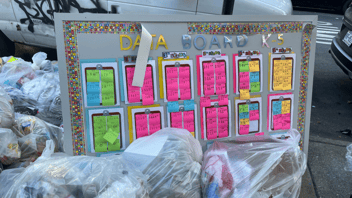

Published: April 11, 2023
Professional Learning Communities (PLCs) and Networks (PLNs) are groups of educators who come together to collaborate and improve their teaching practices. The goal of these communities is to enhance student learning by creating a culture of continuous improvement.
Teachers can use PLC time to work together with their colleagues and share best practices, including strategies for using data to inform their instruction. In elementary schools, teachers typically meet as a grade-level team; in middle and high schools, departments will often form a PLC to focus on a single subject. However, there are many types of PLCs that are not limited to these frameworks.
Using Data in PLCs
One of the key components of a successful PLC is the use of data and reporting to support student progress. During PLC meetings, teachers regularly review data and set specific goals and targets for student achievement. By collecting and analyzing data, teachers can identify areas where students are struggling and adjust their instruction to better meet the needs of their students.
There are a variety of data sources that teachers can use to inform their instruction, including formative and summative assessments, benchmark assessments, students’ assignment and work samples, and classroom observations. Learning management system (LMS) data is also very useful as an early indicator of how students are faring before or in between assessments. By regularly reviewing and analyzing this data, teachers can make informed decisions about how to adjust their teaching to better support student learning.
Oftentimes, “using data in your PLC” is easier said than done. What data teachers can access, how to share it easily, and how to interpret it are universal challenges for teachers and administrators that don’t disappear just because a PLC has formed. It is not uncommon for teachers to arrive at PLC meetings armed with printouts of spreadsheets and post-it notes. These analog options can work in a pinch, but in the era of Google Drive and with tools like Schoolytics, we can do better drawing on sources of student data (access a free template for documenting your PLC meeting notes here).
How Instructional Coaches and Principals Can Help
Understanding how to interpret and analyze the data requires instructional coaches and principals to offer teachers training and support early on, as well as ongoing professional development (PD) opportunities throughout the school year. Principals and district staff should also provide teachers with access to data analysis tools and resources. Additionally, instructional coaches and principals can help facilitate PLC meetings, where applicable, and provide teachers with the time and resources they need to effectively collaborate and analyze data.
Best Practices for a Successful PLC
Collaborative Culture: A thriving PLC requires a collaborative culture where teachers feel comfortable sharing their ideas, experiences, and mistakes with one another. Teachers should also have opportunities to build relationships with their colleagues.
Shared Vision: A clear and shared vision is essential for a successful PLC. The vision should be centered on improving student learning and should be aligned with the strategic goals and values of the school or district.
Data-Driven Decision Making: A PLC should use data to inform their instructional practices and track the effectiveness of their strategies, revising where and when needed.
PD Implementation: PLCs are an excellent medium for taking concepts learned in PD sessions and putting them into action. Teachers can use PLC time to learn new instructional strategies and develop their knowledge and expertise in their subject area.
Accountability and Objectives: When done right, PLCs should be a place where teachers set goals and commit to reaching them.
Reflective Practice: Teachers should be encouraged to engage in reflective practice, where they regularly reflect on their teaching practices and consider ways to improve.
PLCs can be a valuable resource for teachers and administrators as a place to learn and grow their knowledge and skills. The most successful PLCs leverage data to make smart, strategic instructional decisions and align on collective action to maximize student learning.


